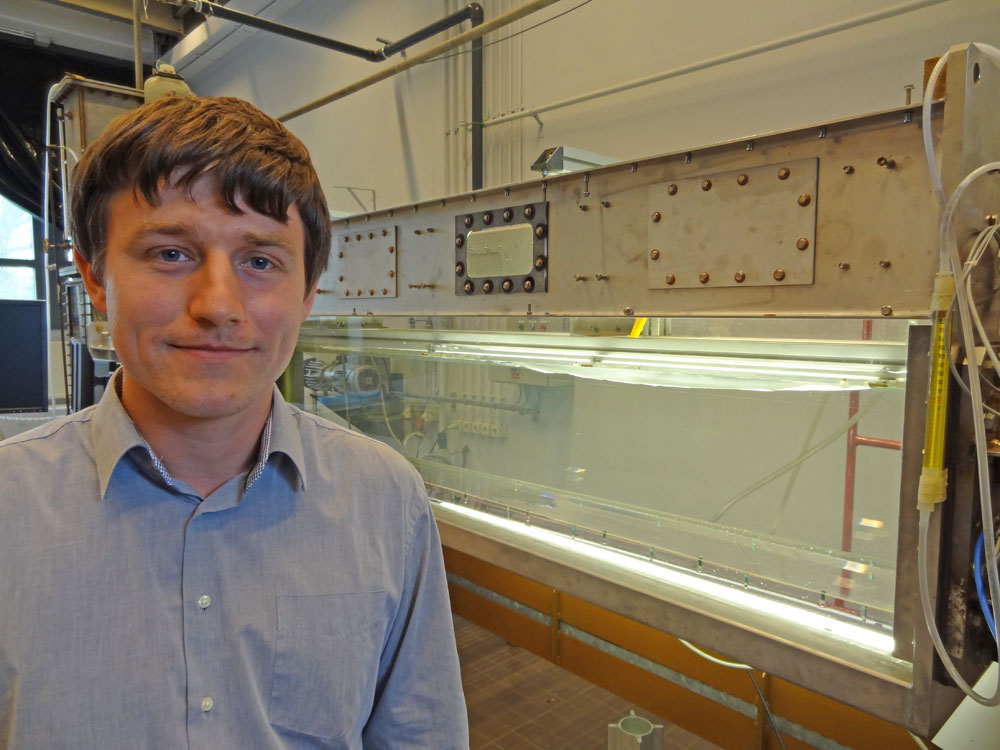Name: Oleksandr Zverkhovskyi (MSc)
Nationality: Ukrainian
Supervisors: Prof. Tom van Terwisga (3mE-MTT, Ship Hydromechanics and Structures), Prof.
Jerry Westerweel and Dr René Delfos (3mE-P&E, Fluid Mechanics section)
Subject: Ship drag reduction by air lubrication
Thesis Defence: In one year
Blowing air underneath the ship’s hull seemed to reduce the local skin friction drag up to 90%, greatly reducing the energy consumption of propulsion. These figures, based on early laboratory results, sparked wild dreams about fuel reduction in the shipping industry a decade ago. But implementation efforts proved inconclusive, nonetheless.
Four years ago, this apparent contradiction motivated two Maritime Engineering departments to collaborate with other universities on a quest to discover the physical mechanisms that occur around air bubbles and air bubble lubrication in general. Two PhD students from TU Delft embarked on projects to find explanations and further possibilities for implementation. The results are convincing, but surprising.
Marc Harleman was the first to start with his PhD study. Developing his test set up, Harleman examined the interaction between ‘micro’ – very small, non-deformable – bubbles and the surrounding water flow. Overcoming many obstacles, he explored the mechanisms of micro bubbles interacting with a turbulent flow, but concluded that there is no significant fuel reduction to gain from using micro bubbles around the hull of the ship.
Oleksandr Zverkhovskyi (MSc) started his doctoral study about two years later and chose a different direction, based on the findings by Harleman. He examines the use of an air ‘film’ – a layer of air – on the bottom of the ship between the hull and the water to reduce the friction drag. Including the effect of turbulence on the air film, Zverkhovskyi not only explores the relevant physical mechanisms but also concludes that implementation of this technique can actually be realized. Currently, Zverkhovskyi is narrowing down his research and examining the stability of air cavities in his experiments.
Future developments are promising, especially for inland waterway shipping. Supervisor Tom van Terwisga: “What I think is realistic is to expect a 10% fuel reduction on inland waterway shipping with this sort of technique, and that is a conservative estimate”.



Comments are closed.